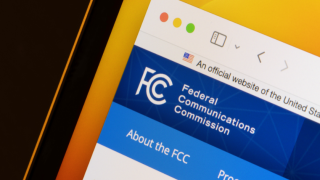The event was a significant milestone following six years of hard work for Jake Rasweiler, American Towers SVP for Product Strategy, Technology & Growth Investments.
Rasweiler’s team has been exploring American Tower’s data centre strategy since 2018, and following its acquisition of CoreSite in 2021, has been responsible for defining the product and approach for American Tower’s distributed data centre portfolio.
“The Raleigh site represents the first instance of a new aggregation data centre, or local interconnection data centre that can server tier 2 markets,” he explains.
How has American Tower’s data centre strategy led us to this point?
Jumping back to 2018, American Tower identified a trend that the increasing levels of compute, mobile data and top applications moving to the cloud would significantly increase network traffic.
“Historically, you look at any telecommunications network, and as you put more traffic on it, it inherently gets flatter and more decentralised,” Rasweiler says.
As its name suggests, American Tower’s bread and butter is providing telecom tower sites to Mobile Network Operators (MNOs). In the US alone it manages over 40,000 cell sites, which means it has an operational proficiency in managing distributed telecom infrastructure, alongside a large land bank that it views as a natural expansion point for the expected decentralisation.
“What we didn’t have at that time was a seat at the table with the cloud providers that would allow us to become the origination point for the decentralisation,” Rasweiler adds.
To build its understanding of the data centre industry and the relationships needed to operate within it, American Tower made its first acquisition in the data centre space, buying Colo ATL, a colocation and meet-me room business in downtown Atlanta.
Like other wireless infrastructure providers at the time, American Tower had been exploring ways it could monetise edge computing, spurred on by the exciting use cases imminent 5G rollouts promised.
However, American Tower concluded that decentralisation would occur from the core network out, rather than the towers in.
After the acquisition of Colo ATL and DataSite, which also runs edge data centres in Atlanta and Orlando, Florida, a realisation that there was a significant opportunity in the convergence between tower networks and the cloud led the firm to make a much larger acquisition in the form of CoreSite.
With a price tag of over $10 billion, CoreSite added 25 highly interconnected data centre facilities and cloud onramps in eight US markets.
“The CoreSite portfolio is mainly large multi-facility campuses where a lot of interconnection activity happens today,” Rasweiler explains.
“We think of Raleigh as an interconnect-centric facility in a tier 2 market that is a local hub, fed by two regional hubs, in Atlanta and Virginia.”
Why Raleigh and who is it for?
The Raleigh data centre is designed to support 4MW of IT load, and being in a smaller tier 2 market, has been “right-sized” to serve its purpose of facilitating more local interconnections.
The capital of North Carolina, Raleigh not only sits between two of the US’s major data centre hubs in Atlanta and Virginia, but is also a growth market in its own right.
“We see Raleigh as strategically located and primed for growth as a natural expansion point for the industry if decentralisation is to occur,” Rasweiler says.
As well as being one of the fastest-growing metro areas in the country, a strong academic presence can be felt in the city, with major universities and research institutions located close by.
American Tower also has an office and technically skilled employees in Cary, a town in the same metropolitan area, which boosted its prospects as the first location for American Tower’s new breed of data centre.
In terms of the tenants that it will host, Rasweiler says American Tower will be sticking to what they know, and expect the first tenants in the facility to be in line with those you’d expect to see in a larger CoreSite facility.
“For Raleigh and the wider aggregation data centre platform, we’re sticking close to our roots as to what we think are the company’s that would most plausibly benefit from this type of infrastructure: AI, hybrid cloud and IoT applications and enterprises.”
However, in the future, he expects that more MNO tenants might appear.
“As MNO’s continue to evolve their networks, there will be more opportunities to interconnect their mobile clouds and 5G cores as they are upgraded to more cloud-centric designs”
While American Tower will not be in the business of providing large hyperscale data centres for large language models, Rasweiler does see a role for facilities like the Raleigh data centre in the AI ecosystem.
“An edge data centre brings a digital ecosystem closer to an end user or an enterprise,” he says.
“The comparable application of this in AI is edge Inferencing. If you want to deploy IoT for customer service on a real-time basis or augmented reality to help with decision making or maintenance, these AI workloads need their models to be deployed in a low-latency environment, which will be an added use case contributing to the edge.”






